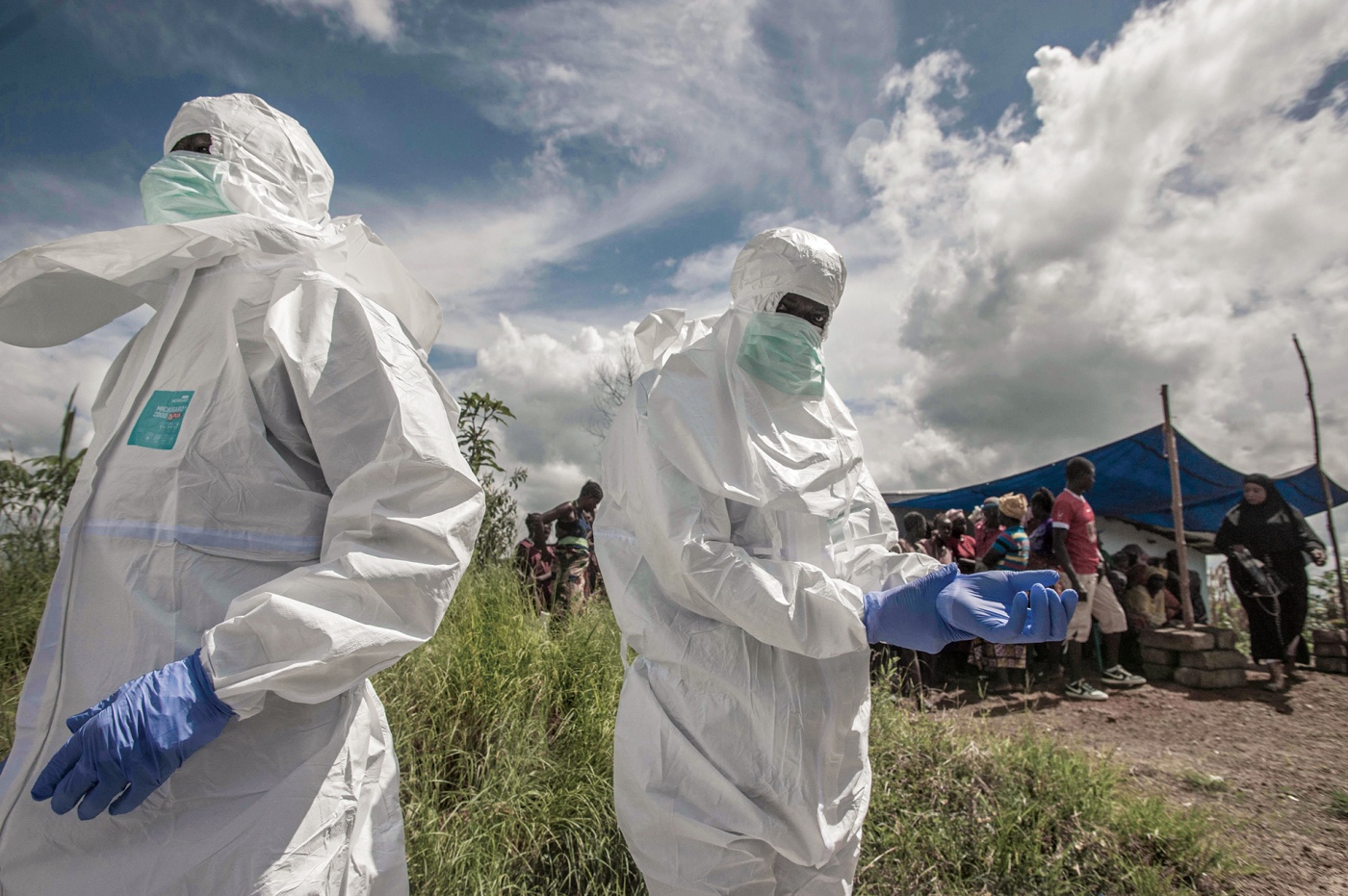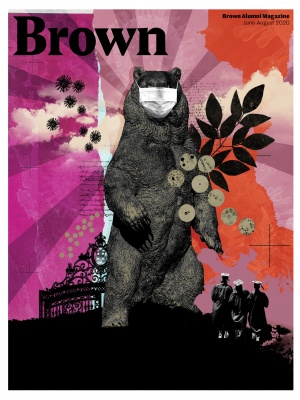On the last day in March, as the novel coronavirus raged around the world, about 60 frontline health workers in North Macedonia attended a virtual conference on Zoom to learn how to quickly train armies of their colleagues should COVID-19 soon sweep through the Balkan country. (As of the training day, the country had reported only a handful of cases.) The idea was that each worker on the call would not only walk away with the best practices on how to contain, triage, and treat the virus, but would then be equipped to turn around and train another 25 to 100 community health workers, either remotely or in person.
The online training—which in coming days would reach health workers in Ethiopia, Puerto Rico, Kosovo, and Indonesia, just for starters—came courtesy of a crash collaboration between the longstanding international healthcare organization Project HOPE and the Center for Human Rights and Humanitarian Studies (CHRHS), established last year at Brown’s Watson Institute. A fusion of the virologic and public health expertise of Brown experts across departments (including Warren Alpert Med School) and the on-the-ground humanitarian-aid know-how of HOPE, the training offers a quick-and-dirty course in key modules of COVID-19 management, including infection prevention and control, screening and triage, diagnosis, management, stabilization, and resuscitation, and, crucially, surge capacity, risk communication, and public health messaging. Likely to be publicly available online via Project ECHO, the package is based on a training-the-trainers model for maximum, rapid scale-up in any given country or region.
According to Adam Levine, director of CHRHS, the project came together so swiftly because Project HOPE is one of the dozen organizations worldwide with which CHRHS has a pre-existing alliance. “It’s important to have those partnerships in place when a disaster strikes,” he says. “Otherwise it’s impossible to develop a response quickly.” In this instance, HOPE—whose staffers had already been supporting hospitals in Wuhan, China—reached out to CHRHS. “They realized health providers there had really needed training in how to handle the epidemic,” says Levine, “and that would be even truer for less prepared countries.”
The race was on. “COVID is a brand-new disease and we had to build this fast, in less than two weeks,” says Levine. “We were able to use the incredible faculty here at Brown, from public health to emergency medicine to infectious disease to engineering and anthropology.”
COVID is a brand-new disease and we had to build this fast, in less than two weeks.
One module of the training focuses on how to balance humanitarian aid with human rights, such as the importance of urging that vulnerable groups, such as immigrants and refugees, not be stigmatized in a time of fear and panic. Another includes instructional videos on how to put on and take off personal protective equipment (PPE), especially during the high-risk actions of intubating and ventilating COVID-19 patients with respiratory failure.
The training is not the only one out there, says Levine. The World Health Organization, for one, has posted online webinars. “But what’s unique about ours is that we collaborated with HOPE, which already has staff and resources on the ground, working to fit local needs.”
An urgent reunion
This is not Levine’s first pandemic. He spent six weeks in Liberia in 2014 fighting the Ebola crisis and was named among other such fighters as Time magazine’s “Person of the Year.” Working alongside him there was Tim Flanigan, an Alpert professor in infectious diseases. “When Adam put out the call that they were pulling together COVID-19 material, I jumped at the chance to help,” says Flanigan. “There’s a tremendous amount of material already online, but a lot of it is in technical jargon. It needed to be presented in a way that was equally accessible for clinicians, program directors, and infection control folks, so that cross-disciplinary teams could be quickly put together.”
Flanigan says the training includes community broadcasting, a hugely important part of pandemic control. “Communities need cheerleaders to give them clear directions and let them know they can play an important role”—by, say, practicing rigorous social distancing. And it stresses protecting and minimizing sickness among health workers. “When the healthcare system shuts down, the repercussions are enormous.”
Flanigan has treated COVID patients in Rhode Island hospitals and says that for all the talk of equipment shortages in the U.S., it’s nothing compared to the lack of resources in some countries that the training will reach. “Certain countries are going to get hammered, with a PPE shortage a thousand times worse than ours. This training”—which includes such helpful nuggets as how to teach families to care for non-dire COVID patients at home, while keeping the house sterile with a simple bleach solution—“gives them the support they need.”
A work in progress
The training also thoroughly marries individual clinical care with the broader public health effort, says Tom Kenyon, chief health officer for Project HOPE. “When you see patients,” he says, “they could very well be part of a larger cluster of transmissions. Say I see a 58-year-old who’s got fever, dry cough, respiratory distress. The immediate priority is to care for them, but where are they coming from? A household? An office full of colleagues? A long-term care facility? It’s important to reach out to those places, which is often more feasible to do in [sparsely populated] rural areas than it is in cities. If you can reach those people, they can self-quarantine and stop at least some of the chain of transmission.”
Kenyon says that the training can also be helpful in the U.S. “I’ve heard through the grapevine that [many American] clinicians are starving for information. With Ebola, we saw levels of illness, pain, and discomfort, and U.S. healthcare workers have to be prepared for that mentally as droves of patients are about to come in.”
Down the line, says Levine, Brown and Project HOPE will have to figure out how to properly evaluate the effectiveness of the training. For the time being, though, “we’ve created pre- and post-training tests for participants to see if their information levels and beliefs about the virus change as a result.”
That’s about all there’s time for right now in terms of evaluation, because the epidemic is moving so quickly. “We need to start rolling this out immediately to understand what front-line healthcare workers need most,” says Kenyon. “Normally we’d do a lengthy process of soliciting feedback, but we don’t have that luxury. We’re building this plane while it’s flying.”






